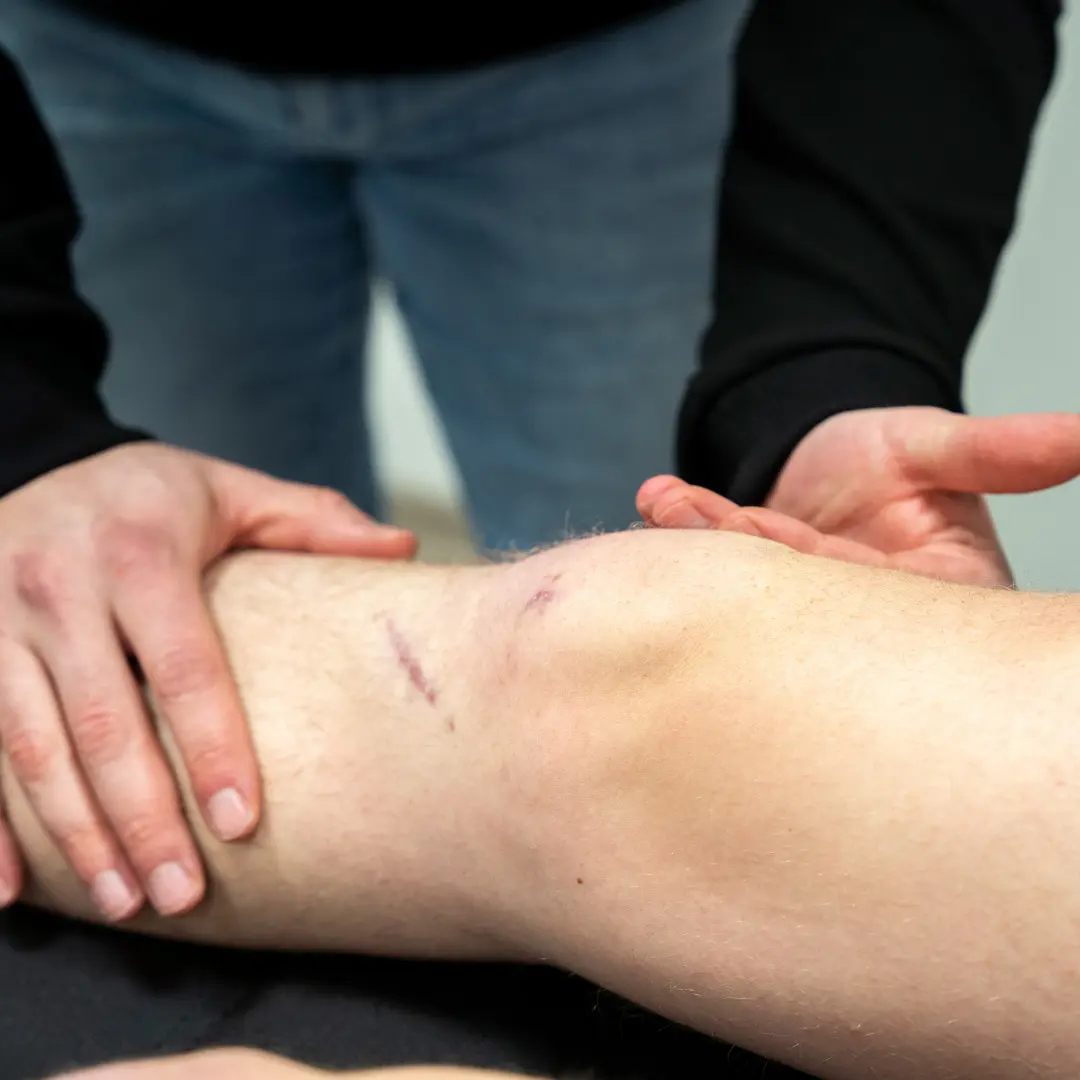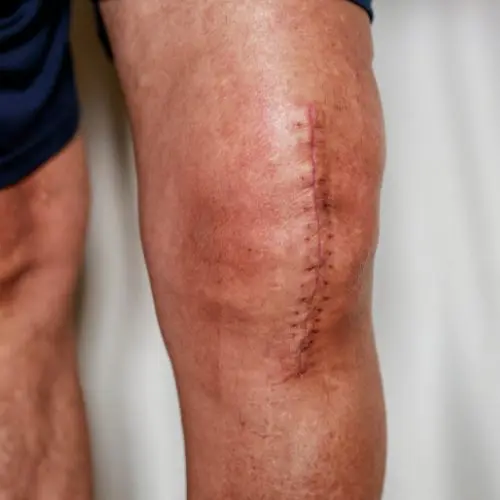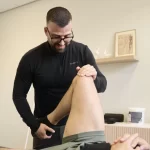Wound healing after surgery
Surgery always involves tissue damage. Surgical wounds from musculoskeletal procedures are almost always closed. This is done with sutures, adhesive strips or staples, for example. It is important to pay attention to the wound-healing process because we want to get rid of an open connection between the outside air and our body as soon as possible. This reduces the risk of various complications.

Red flags in wound healing
There are chances of complications after any surgery, so too with wound healing. There are a number of symptoms/signs you should be wary of. Indeed, if you recognise one or more of the signs below in your wound healing process, you should contact the outpatient clinic of the hospital or clinic where you had surgery.
- Redness i.c.w. swelling and/or pus at the wound area
- Fever (persistently elevated body temperature of >38 degrees celcius)
- Post-bleeding
- Extreme pain at the wound that will not subside with analgesia
- Loss of (smelling) wound fluid
Sometimes any sutures may cause some irritation in the skin. This is not an alarm signal, so there is no need to contact the outpatient clinic immediately.
The wound healing process
Small surgical wounds usually take 24-72 hours to close. Larger wounds may require more time. Wound healing takes place in several stages;
- Phase 1; blood clotting
After damage is made to the skin/tissue, bleeding occurs, the body will start clotting it so that the bleeding stops. - Stage 2; redness of the skin
Blood vessels are used in and around the wound area to move blood cells to the affected tissue. - Stage 3; granulation and proliferation
The formation of new cells. - Phase 4; epithelialisation and regeneration New tissue fills the wound and proper blood supply and transport of oxygen and nutrients is ensured by newly created blood vessels.
- Stage 5; maturation
Formation of scar.

Pressure bandages and plasters
Sometimes pressure bandages are used in addition to plasters after surgery. This partly depends on the region in which surgery was performed.
Sutures
Depending on the procedure, staples, soluble- and non-soluble sutures can be chosen to close a surgical wound. In the case of soluble sutures, you do not need to do anything extra, they dissolve (as the name suggests) by themselves. If staples or insoluble sutures are used, you will have a follow-up appointment at the outpatient clinic (or with your GP) to have them removed. This is often somewhere between 7-14 days.
Do's and Dont's
- Showering with stitches is fine, but keep it short and absolutely do not bathe. After all, you don't want to soak the wound.
- Do not use closing plasters (for too long); it is good to let the wound heal dry in the air.
- After showering, you can pat the wound dry (do not rub it).
- Are you normally a user of cigarettes or the like? Stop this (temporarily). Smoking has a strong negative impact on wound healing. In any case, it is recommended to stop smoking for a longer period of time after surgery for proper overall healing.
- Limit the amount of UV radiation on the wound area for the first 6 months.
- Limit physical activity for the first 5-7 days after surgery to avoid excessive pressure and pulling forces acting on the wound.
Do you have questions about your recovery and the policies that go with it? Feel free to ask them!
At Fysio Fitaal Tilburg, we will help you get back on the field, track or in the gym as soon as possible! Together with our physiotherapists, you will work step by step towards a pain-free and healthy situation to get back to sports with full enthusiasm. Make an appointment!

